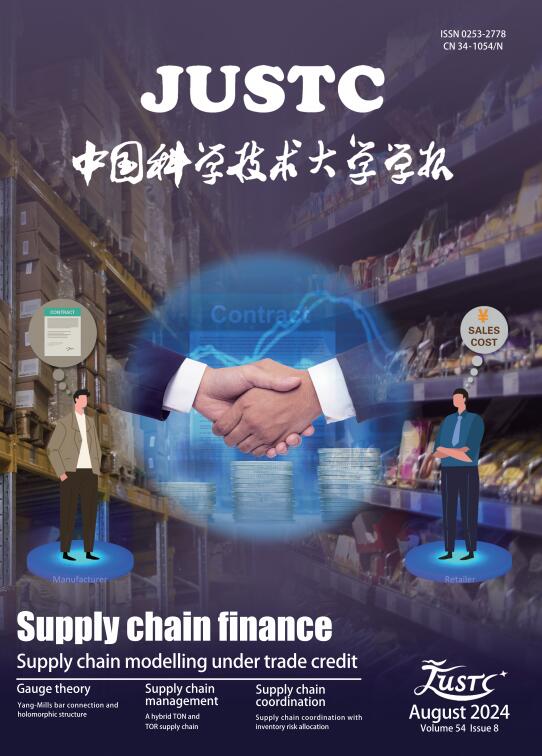2020 Vol. 50, No. 6
Display Method:
2020, 50(6): 726-732.
doi: 10.3969/j.issn.0253-2778.2020.06.002
Abstract:
2020, 50(6): 733-737.
doi: 10.3969/j.issn.0253-2778.2020.06.003
Abstract:
2020, 50(6): 752-757.
doi: 10.3969/j.issn.0253-2778.2020.06.006
Abstract:
2020, 50(6): 784-792.
doi: 10.3969/j.issn.0253-2778.2020.06.010
Abstract:
2020, 50(6): 801-810.
doi: 10.3969/j.issn.0253-2778.2020.06.012
Abstract:
2020, 50(6): 825-831.
doi: 10.3969/j.issn.0253-2778.2020.06.015
Abstract:
2020, 50(6): 839-843.
doi: 10.3969/j.issn.0253-2778.2020.06.017
Abstract:
2020, 50(6): 844-851.
doi: 10.3969/j.issn.0253-2778.2020.06.018
Abstract:
2020, 50(6): 852-859.
doi: 10.3969/j.issn.0253-2778.2020.06.019
Abstract:
2020, 50(6): 860-872.
doi: 10.3969/j.issn.0253-2778.2020.06.020
Abstract:





